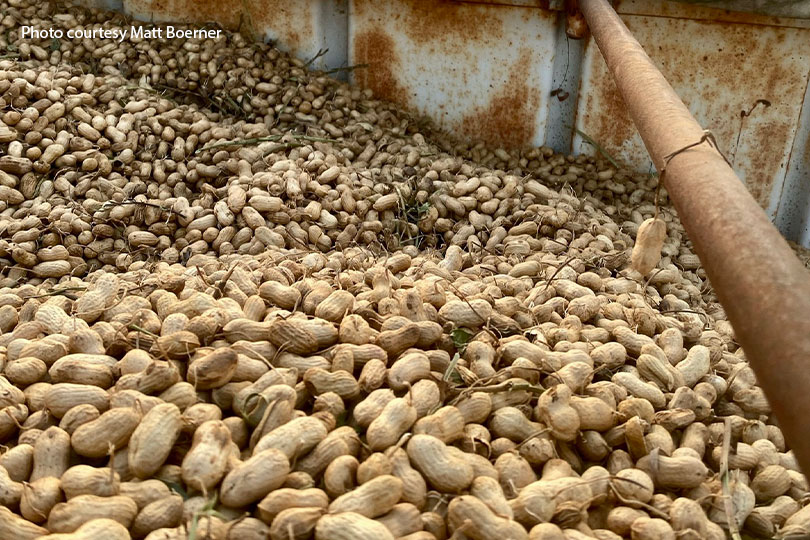By Shelby Shank
Field Editor
Two years of consecutive drought continued to impact planted peanut acres, making it another tough year for Texas peanut growers.
“This year’s peanut growing season was a roller coaster,” Matt Boerner, a peanut farmer in Cooke County, said. “We started with wet conditions and a good stand for the crop, and then we moved into a dry and hot summer. We received rainfall later in the season, but with cooler temperatures and less sunlight, it was too late for the crop to produce.”
Despite extreme drought conditions, peanut production in Texas is forecast at 656 million pounds, an increase of 100% over last year, according to the November USDA National Agriculture Statistics Service report.
Peanut yields are expected to reach 3,200 pounds per acre, up–400 pounds more than the previous season.
Although 205,000 acres of peanuts were expected to be harvested this year, AgriLife Extension State Peanut Specialist Dr. Emi Kimura noted the report does not fully depict the 2023 growing season. Almost 14,000 acres of the 230,000 peanut acres in Texas were lost to dry, hot conditions, according to Kimura.
Farmers who were able to irrigate their crop throughout the drought were able to maintain good pod and peanut development. However, those who were not able to keep up with moisture demands, suffered another rough year.
Kimura noted drought delayed crop progress, and weather-related events delayed harvest.
“Producers waited a week or two longer than normal to harvest their crop since the rain we received in May and June pushed back planting,” Kimura said. “The drought also slowed down production, so waiting to harvest allowed the crop to mature.”
Peanut prices have reached the highest level seen in the last decade at $545 per ton on average, according to the High Plains Ag Week – Peanut Market update.
The report also shows a shift in demand for peanuts in the U.S. Consumption of peanut candy, snacks and other products decreased 9%, but peanut butter and in-shell peanut consumption increased 6%.
“With having back-to-back years of drought, we hope to have a different story next year,” Boerner said. “We hope to see more rain, greater demand and market prices that are competitive with the cost of inputs.”

